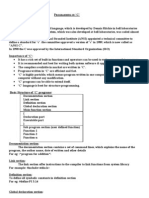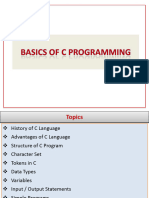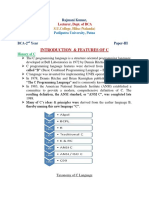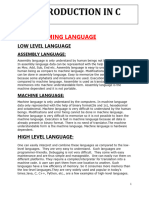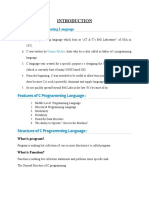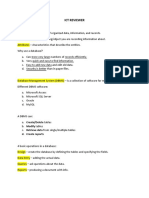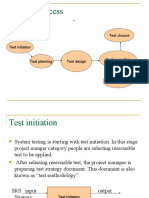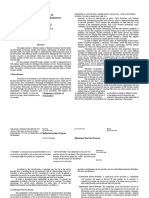0% found this document useful (0 votes)
81 views33 pagesC Programming Basics and Structure
The document provides an overview of the C programming language, including its history, features, and basic program structure. It covers essential concepts such as source code, object code, and the programming process, along with definitions of key terms and components of Turbo C. Additionally, it explains input/output statements, operators, and the rules for identifiers in C.
Uploaded by
lorenzolyzaCopyright
© © All Rights Reserved
We take content rights seriously. If you suspect this is your content, claim it here.
Available Formats
Download as PDF, TXT or read online on Scribd
0% found this document useful (0 votes)
81 views33 pagesC Programming Basics and Structure
The document provides an overview of the C programming language, including its history, features, and basic program structure. It covers essential concepts such as source code, object code, and the programming process, along with definitions of key terms and components of Turbo C. Additionally, it explains input/output statements, operators, and the rules for identifiers in C.
Uploaded by
lorenzolyzaCopyright
© © All Rights Reserved
We take content rights seriously. If you suspect this is your content, claim it here.
Available Formats
Download as PDF, TXT or read online on Scribd
/ 33












